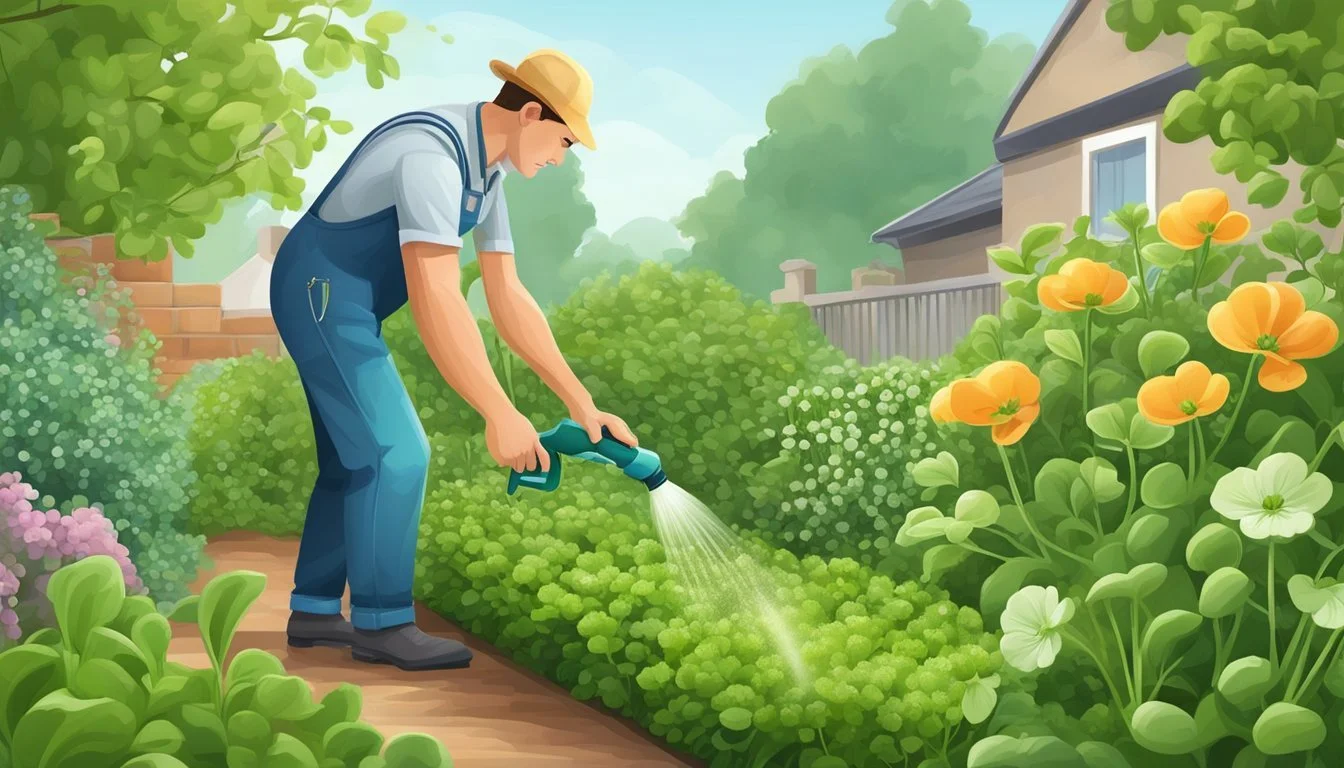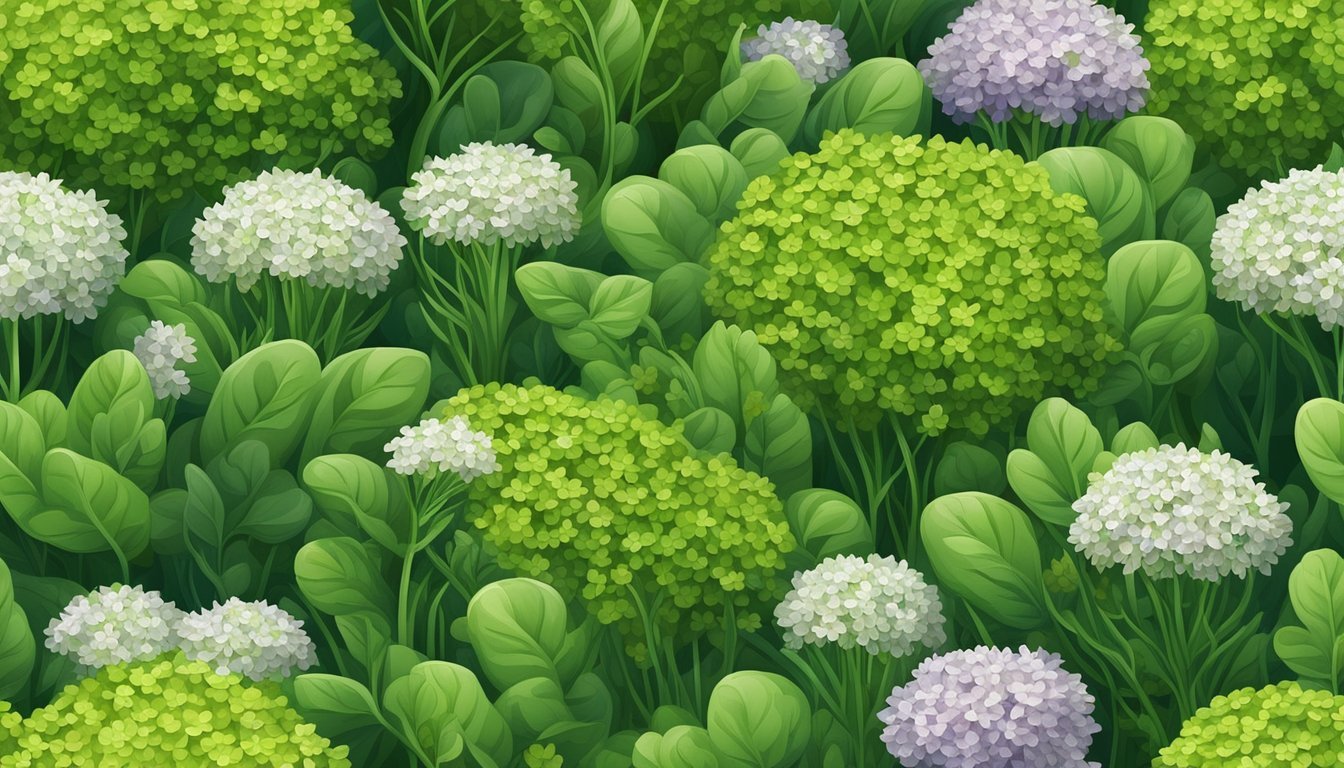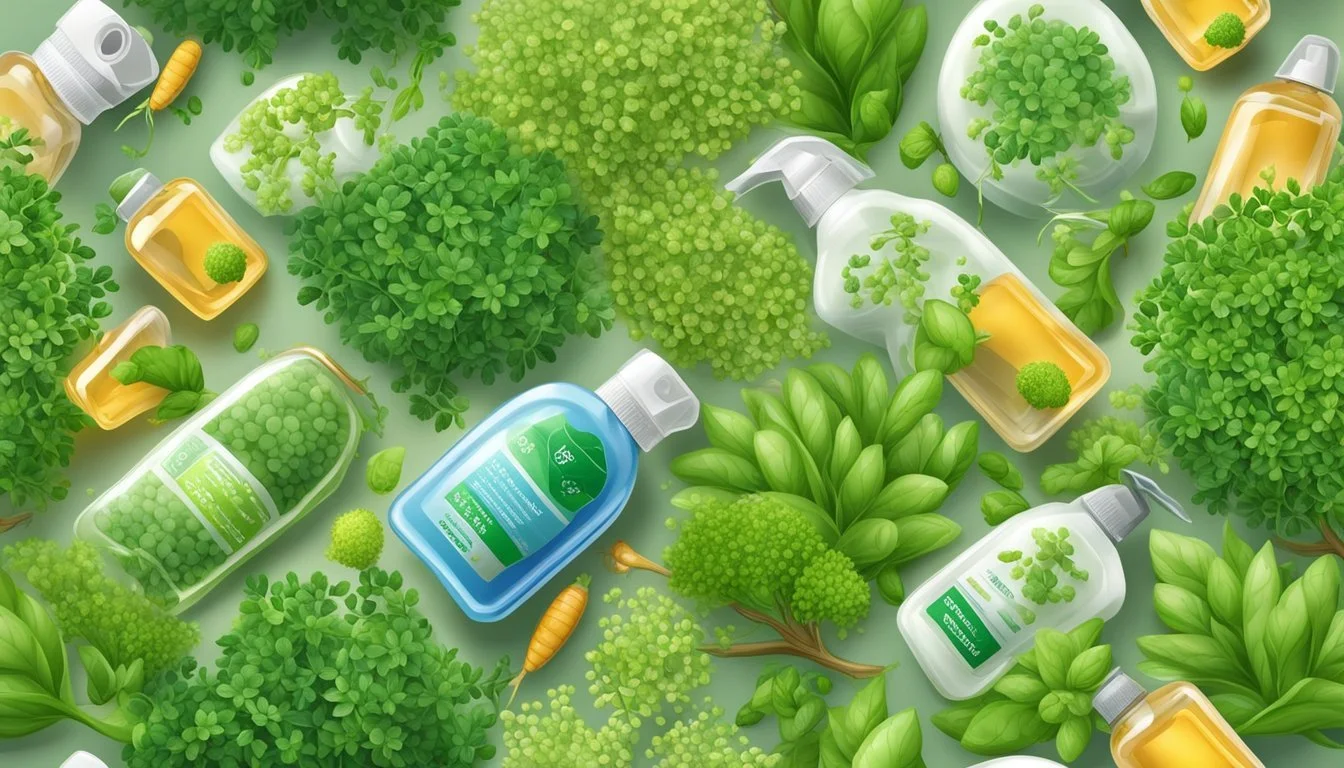Pest Control for Garden Cress
Effective Strategies for Healthy Growth
Garden cress, a leafy green known for its peppery taste, has long been a staple in salads and as a fresh garnish. Due to its nutritious nature, being high in vitamin C, iron, and calcium, it's a favored choice among gardeners looking to enrich their diets. Growing garden cress, like cultivating any edible plant, presents its own set of challenges, notably pest control.
Pests can significantly hinder the growth and health of garden cress, affecting both yield and quality. Aphids, slugs, and snails are common nuisances that feast on the tender leaves, potentially decimating crops. It is crucial for gardeners to adopt effective pest control strategies to protect these verdant plants. By doing so, they ensure the consistent availability of this nutritious green for their kitchen.
Implementing organic pest control methods not only helps preserve garden cress but also aligns with eco-friendly gardening practices. In pursuit of growing robust and healthy cress, safeguarding against pests is as essential as providing the plants with suitable growing conditions. Addressing pest control comprehensively sustains the vitality of garden cress and maximizes the benefits reaped from this piquant and wholesome green.
Understanding Garden Cress
In this section, we explore garden cress, a nutritious and versatile plant that is simple to grow and beneficial for health. It is an excellent candidate for both beginners and experienced gardeners seeking a fast-growing crop.
Botanical Profile
Garden cress, scientifically known as Lepidium sativum, is a member of the Brassicaceae family, closely related to mustard and watercress. It is an herbaceous annual that can reach a height of 15 to 60 cm, with many branches and narrow, oval leaves. The plant also yields small pink to white flowers, a characteristic trait of the cruciferous family.
Cultivation Requirements
To thrive, garden cress requires a few specific conditions:
Sunlight: Prefers full sun to partial shade.
Soil: Optimal growth in well-drained soil with a pH of 6.0 to 7.0.
Watering: Consistent watering is essential, as garden cress prefers soil that is consistently moist but not waterlogged.
Sowing Garden Cress:
Indoors: Can be started inside for earlier harvests.
Outdoors: Direct sow in rows, or scatter seed for a more informal planting.
Space rows about 6 inches apart, thin seedlings to stand 2-3 inches apart.
Nutritional Value
Garden cress is notable for its high nutritional content. It is a rich source of iron, vitamin C, and calcium. The plant's leaves and stems are edible and offer significant health benefits due to their nutrient density.
Preparation and Use
Garden cress is savored for its peppery flavor. It is most commonly used fresh in salads and sandwiches. The greens should be harvested before flowering for the best taste. Once harvested, garden cress can be washed and consumed immediately, ensuring freshness and nutritional potency.
Propagation Methods
The propagation of garden cress is straightforward:
Seeds: Start seeds indoors or directly outdoors in the desired sunny location.
Self-Seeding: Allow plants to go to seed to naturally reoccur in subsequent seasons.
Growth Stages and Harvesting
Garden cress can be harvested within 15 to 20 days after sowing when the plants are about 2 inches tall. The rapid growth cycle and high yield make it ideal for continuous harvesting, ensuring a regular supply of fresh greens for the kitchen. To harvest, simply cut the stems of the cress above the soil line.
Pest and Disease Management
Effective pest and disease management in garden cress involves early identification of issues, understanding pest behaviors, and implementing control methods. Using a combination of natural and chemical strategies can help protect crops from harm.
Identifying Common Pests
Garden cress can fall victim to various pests such as aphids, flea beetles, caterpillars, and slugs. Indicators of pest activity include holes in leaves, discoloration, and the presence of grubs or larvae. For example, aphids are small and can cause leaf curling and stunted growth, while caterpillars may leave behind irregular holes and chewed edges.
Understanding Pest Behavior
Pests such as ants can farm aphids for their honeydew, exacerbating aphid infestations. Japanese beetles and grubs prefer moist soil and can cause significant root damage. Understanding these behaviors assists in timing control methods effectively.
Diseases Affecting Garden Cress
Garden cress may suffer from fungal diseases that present symptoms such as leaf spots, wilting, or powdery mildew. Applying a fungicide is an option when natural methods fail to prevent or control disease spread. Always look for specific signs of disease to apply the correct treatment.
Natural Pest Control Methods
Natural strategies include the use of companion planting—for example, planting yarrow or marigolds to attract beneficial insects like ladybugs and lacewings. Neem oil and insecticidal soap can deter pests without harsh chemicals. Handpicking pests and applying diatomaceous earth around the base of plants provide physical barriers and direct control.
Natural Control Description Companion Planting Intercrop with plants that repel pests or attract beneficial insects. Beneficial Insects Encourage or introduce predators like parasitic wasps to manage pest populations. Neem Oil Organic pesticide that disrupts the life cycle of pests. Insecticidal Soap Use to eliminate soft-bodied insects like aphids and mealybugs.
Chemical Controls
When natural methods are insufficient, chemical pesticides and insecticides may be necessary. For targeted application, soapy water solutions or products containing spinosad can effectively manage pest infestations. Always follow label instructions and use chemicals as a last resort to minimize environmental impact.
Remember that preventive measures such as proper fertilization, using row covers, and establishing trap crops can significantly reduce the need for reactive treatments. Maintaining a healthy garden environment is key to reducing pest and disease issues.
Garden Maintenance for Pest Control
Effective garden maintenance can significantly deter pests from harming garden cress. Incorporating specific cultural practices, using mechanical and physical barriers, understanding the environmental factors, and applying ongoing monitoring are crucial to managing pests.
Cultural Practices
Gardeners should focus on the soil health by incorporating organic compost to nurture garden cress. Water should be applied judiciously, avoiding excess moisture that attracts pests. Regularly applying mulch can help in retaining soil moisture while suppressing weeds that harbor pests. Additionally, removing debris and thinning out cress to prevent overcrowded clusters enhances air circulation and reduces pest infestation.
Mechanical and Physical Barriers
Utilizing row covers can shield garden cress from a variety of insects and small animals. Rocks can be strategically placed to deter slugs and snails, while a hose can be used to dislodge pests from plants. For instance, handpicking large pests or using traps for smaller critters can serve as a non-chemical control method. Trap crops planted around the garden cress can lure pests away, minimizing damage to the main crop.
Environmental Factors Influencing Pests
Garden cress thrives in cooler temperatures and partial shade, conditions that can also influence pest behavior. Research suggests pests are less active in these conditions, so placing garden cress in a spot that receives morning sun and afternoon shade can be beneficial. Environmental factors like the amount of sun or shade, water availability, and the presence or absence of natural pest predators should be considered in pest management.
Monitoring and Ongoing Management
Regular monitoring of the garden cress is essential for early detection of pests. Gardeners should conduct visual inspections and use tools like magnifying glasses for closer examination. Based on findings, immediate and appropriate steps such as application of organic pest control methods like insecticidal soap or neem oil should be applied. Continuously researching new and effective garden pest control strategies is recommended for ongoing management.
The application of these practices collectively supports the health of garden cress while managing pest populations effectively.
Integrating Pest Control with Garden Planning
Effective pest control in garden planning incorporates strategic companion planting and systematic spatial arrangement, coupled with crop rotation, to create a robust defense against pests while promoting healthy garden cress growth.
Companion Planting Strategies
Companion planting is a cornerstone of integrated pest management, especially for garden cress. The practice involves placing certain plants together in the garden to deter pests naturally. For instance, garden cress benefits greatly when planted near marigolds or yarrow, as these companion plants are known to attract beneficial insects that prey on common garden pests. Additionally, marigolds emit a scent that can deter certain nematodes and insects, providing a protective shield for the garden cress.
Effective Companions for Garden Cress:
Yarrow: Attracts predatory wasps and ladybugs
Marigolds: Repels nematodes and some insects
Spatial Arrangement and Crop Rotation
Implementing strategic spatial arrangement, such as growing garden cress in rows or clusters, can help limit the spread of pests and diseases. Garden cress should be spatially separated from other crops that might attract similar pests, reducing the chance of infestation. Additionally, practicing crop rotation is vital, as it breaks pest and disease life cycles by not planting garden cress in the same spot year after year. This practice also helps in maintaining soil fertility and reducing soil-borne diseases.
Guidelines for Spatial Arrangement & Crop Rotation:
Thin out garden cress to avoid overcrowding
Alternate rows of garden cress with other crops
Rotate garden cress to different garden plots annually
By leveraging companion planting, beneficial insects, and systematic crop arrangement, gardeners can protect garden cress through a holistic approach that reduces the need for chemical interventions.
Harvest and Post-Harvest Care
Proper techniques in harvesting garden cress and subsequent handling are crucial in maintaining its freshness and nutritional quality. It is equally important to follow correct storage practices to extend the cress's shelf life.
Best Practices for Harvesting
Harvesting should begin roughly 2-3 weeks after the seeds germinate, when the leaves are about 2 inches long, to ensure a tender and flavorful yield. It's advised to use clean, sharp scissors and cut just above the soil line. One should harvest in the cool morning hours to ensure leaves are crisp and to maximize their freshness before they wilt under the sun. Harvesting in rows encourages organized growth and simplifies the process.
Handling Harvested Cress
Once harvested, the cress should be handled gently to prevent bruising. The greens are delicate; therefore, careful handling preserves their quality. They should be immediately cooled after harvest to reduce respiration rates and conserve their fresh, peppery flavor. A prompt rinse in cold water can remove any soil or debris before they are used in fresh salads or as flavorful additions to sandwiches.
Storage and Preservation
To preserve the freshness of harvested cress, they should be stored in a refrigerator at temperatures just above freezing, typically between 1°C and 4°C (34°F and 39°F). For best results, cress should be stored in perforated plastic bags or containers to maintain a high relative humidity. This storage method can keep the cress fresh for up to a week and ensure that the greens remain a vibrant addition to meals.
Additional Tips and Considerations
When growing garden cress, certain strategies can greatly improve your pest management. Paying careful attention to water and irrigation, selecting the appropriate gardening tools, and implementing preventive measures are all crucial in maintaining a healthy crop.
Managing Water and Irrigation
Garden cress requires consistent moisture. It's vital to provide a balanced watering schedule to prevent both over-watering and under-watering. Using a hose with a fine spray attachment or a watering can can help distribute water evenly without disturbing delicate seedlings. Additionally, employing mulch around plants retains soil moisture while deterring pests.
Choosing the Right Gardening Tools
The proper gardening tools can make a significant difference in pest control. Thin, sharp hoe blades allow for gentle weeding between rows, reducing plant stress and the likelihood of pest invasion. Opting for tools with precision can prevent damage to garden cress plants and deter unwanted pests that feed on injured plants.
Preventive Measures
Preventive strategies lay the foundation for a low-pest garden. Introduce row covers to protect young cress from insects and mulch to minimize weed pressure and habitat for pests. Moreover, practice companion planting by placing garden cress near beneficial insects-attracting plants, creating a natural defense system. Regular monitoring and early detection are pivotal in keeping pest issues manageable.
Frequently Asked Questions
Garden cress is susceptible to pest infestations, but proactive measures can help in maintaining healthy plants. This section covers some common questions regarding pest control in garden cress, using methods ranging from home remedies to specific care instructions.
What are some effective home remedies for pest control in garden cress?
Home remedies for pest control in garden cress include the use of mild soapy water or garlic spray, which they can use to deter common pests. Also, introducing beneficial insects, like ladybugs, can help keep aphid populations in check.
How can neem oil be used to protect garden cress from pests?
Neem oil is a natural pesticide that proves effective when diluted with water and sprayed directly onto garden cress. It disrupts the life cycle of pests without harming beneficial insects or the plants themselves.
Which methods are considered the best for controlling pests in garden cress?
Combining practices like crop rotation, regular monitoring, and the use of organic pesticides such as neem oil and diatomaceous earth often ranks as the best approach for controlling pests in garden cress.
How should garden cress be cared for to prevent pest infestations?
To prevent pest infestations, gardeners should ensure proper plant spacing as outlined in Garden Cress 101 and maintain a clean garden environment by removing debris. Healthy soil and adequate watering also decrease the chance of pest problems.
Are there particular animals known to feed on garden cress plants?
Yes, some common animals like rabbits and birds may feed on garden cress plants. Use of netting or fencing can protect the plants from these animals, thus preventing damage.
What distinguishes garden cress from watercress in terms of pest resistance?
Garden cress and watercress have different growing conditions and pest resistance profiles. Garden cress is a land plant often less resistant to common garden pests than watercress, which grows in water and may have less exposure to certain soil-borne pests.







